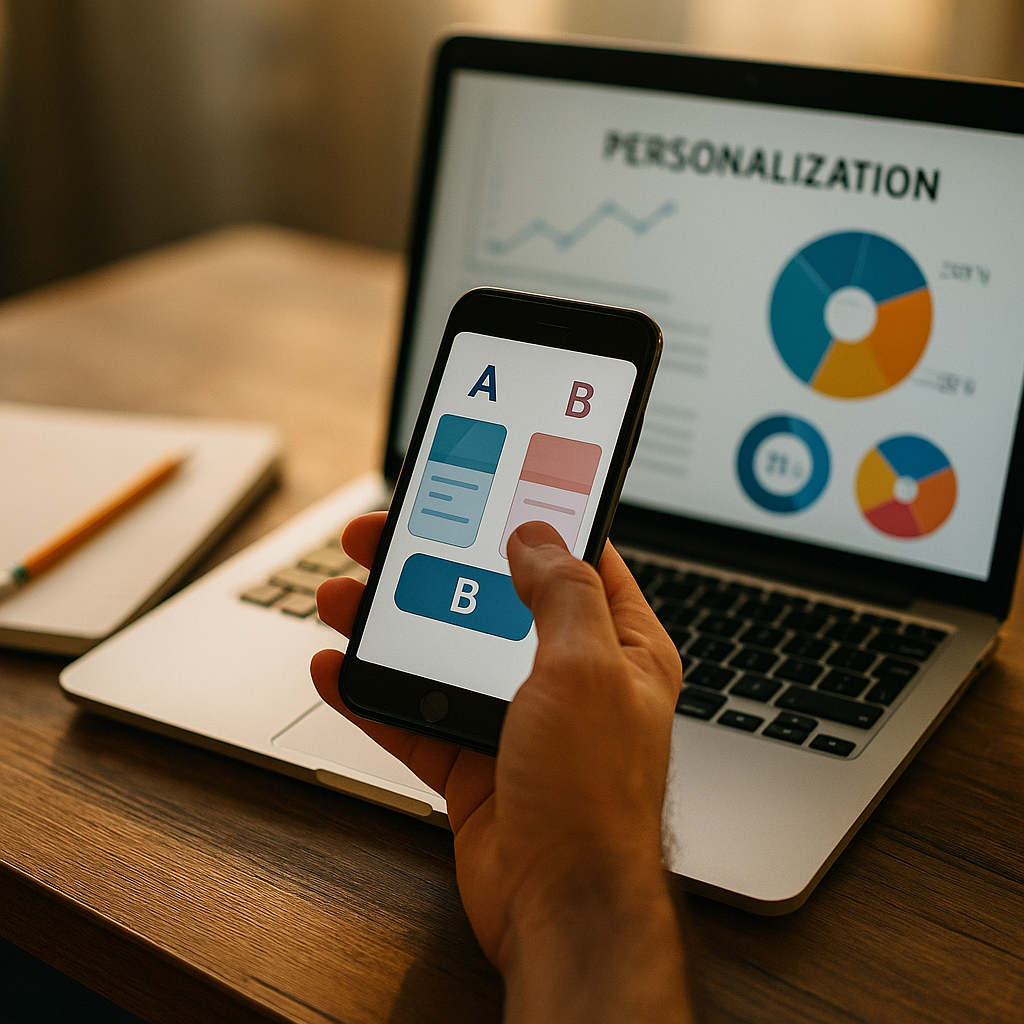A/B testing and personalization platforms for mobile apps empower businesses to optimize user experiences and boost engagement effectively. By leveraging data-driven insights, app publishers can make informed decisions leading to higher conversion rates and customer satisfaction. Explore how these cutting-edge tools redefine mobile marketing strategies and discover which solutions can take your app’s performance to the next level.
Why A/B Testing Is Crucial for Mobile App User Experience
Mobile app user expectations are higher than ever in 2025. Users demand seamless, intuitive experiences tailored to their behaviors. A/B testing for app UX serves as a scientific method to implement and measure interface or feature changes. By deploying multiple variants and monitoring user responses, product teams can:
- Identify and remove friction points in the user journey
- Validate new features prior to full-scale launch
- Increase retention rates and session times
- Minimize the risks associated with subjective decision-making
Tech giants and startups alike rely on A/B testing to iterate faster. According to a 2025 survey by Mobile Analytics Weekly, 74% of top-grossing apps actively run experiments each quarter. This iterative, data-driven process ensures every change aligns with users’ needs and business objectives.
Key Features to Seek in Personalization Platforms for Mobile Apps
Modern personalization platforms for apps enable businesses to deliver relevant content and features to each specific user based on their profile and behavior. The ideal platform offers:
- Real-time segmentation and targeting for personalized messaging
- Integration with analytics suites for deep behavioral insights
- Automation capabilities to trigger actions based on in-app events
- Support for push notifications, in-app messages, and dynamic content changes
- Privacy-first architecture, ensuring GDPR and other regulatory compliance
Look for platforms with machine learning models capable of predicting user preferences at scale. These advanced engines allow fine-grained adjustments and scalable campaigns, crucial for brands competing in saturated markets.
How Leading Solutions Streamline Mobile A/B Testing
In 2025, mobile A/B testing tools have evolved, offering intuitive dashboards and robust developer SDKs. Leading solutions—like Firebase A/B Testing, Optimizely, and Apptimize—provide:
- WYSIWYG editors for instant variant creation
- A seamless app update process without resubmission to app stores
- Comprehensive analytics reporting with statistical significance calculations
- Easy integration with existing CI/CD pipelines
These tools increasingly use AI to automate the discovery of winning variants, drastically reducing time-to-insight. Continuous experimentation is now standard practice even for non-technical teams, accelerating innovation and growth.
Best Practices for Implementing Mobile App Personalization Campaigns
Effective app personalization strategies balance business goals, user privacy, and technical feasibility. Follow these proven steps to maximize ROI:
- Define clear objectives: Focus on metrics that drive value, like lifetime value (LTV) or churn reduction.
- Segment your audience: Leverage behavior, demographics, and in-app events to deliver relevant experiences.
- Test and iterate: Use A/B and multivariate tests to refine messages, timing, and visuals.
- Measure and act on insights: Integrate personalization analytics into product and marketing decision cycles.
- Respect user consent and privacy: Make opt-in processes transparent and secure user data rigorously.
Mobile leaders now automate feedback loops with AI-driven optimization, ensuring content, offers, and features evolve with user expectations.
Understanding the Impact: Results from Data-Driven Optimization in 2025
The business outcomes of utilizing A/B testing and personalization platforms for mobile apps are measurable and compelling. In 2025, industry reports show that mobile apps employing systematic experimentation and individualization achieve:
- Up to 35% improvement in user retention year-over-year
- A 50% higher likelihood of exceeding revenue targets
- A significant reduction in churn after personalized onboarding experiences
- Faster release cycles without sacrificing stability
Success stories—from fintech to gaming—demonstrate that trustworthy, methodical testing combined with relevant personalization correlates with stronger brand loyalty and higher net promoter scores (NPS).
Overcoming Challenges: Ensuring Accuracy and Ethical Standards in Experimentation
Scaling mobile A/B testing and personalization is not without hurdles. Common challenges include:
- Maintaining statistical significance with smaller cohorts
- Balancing user privacy with deep personalization
- Avoiding bias or experiment fatigue among users
- Interpreting data in complex, multi-feature environments
To address these, industry leaders apply advanced statistical methods, ongoing user consent prompts, and transparent reporting. Build trust by making opt-out paths easy and regularly auditing algorithms for unintended consequences. In 2025, ethical experimentation is recognized as both a competitive advantage and a user retention necessity.
Conclusion
Modern A/B testing and personalization platforms for mobile apps are pivotal to staying competitive in crowded digital landscapes. By embracing data-driven optimization, teams unlock higher user engagement, improved retention, and scalable growth. Choose solutions aligned with your tech stack and user privacy values, and make continuous experimentation a cornerstone of impactful mobile strategies.
FAQs about A/B Testing and Personalization for Mobile Apps
-
What is A/B testing in mobile apps?
A/B testing in mobile apps involves showing different versions of a feature or design to randomized user groups and measuring which version performs better based on key metrics. -
How is mobile app personalization different from traditional marketing personalization?
Mobile app personalization tailors content, features, or interfaces in real time, based on in-app behaviors and device-level signals, making it more dynamic and context-aware than traditional methods. -
Do I need coding skills to set up A/B tests in apps?
Many leading platforms now offer no-code or low-code experiment setup, enabling growth and product teams to run tests without deep developer involvement. -
How do personalization platforms ensure user privacy?
Platforms use anonymized data, explicit opt-in prompts, and compliance protocols (like GDPR) to safeguard user information. Choose vendors with strong security certifications. -
How often should I run A/B tests on my mobile app?
Continuous experimentation is best. Top-performing apps launch new tests at least monthly, adjusting based on user volume, business cycles, and experiment results.
